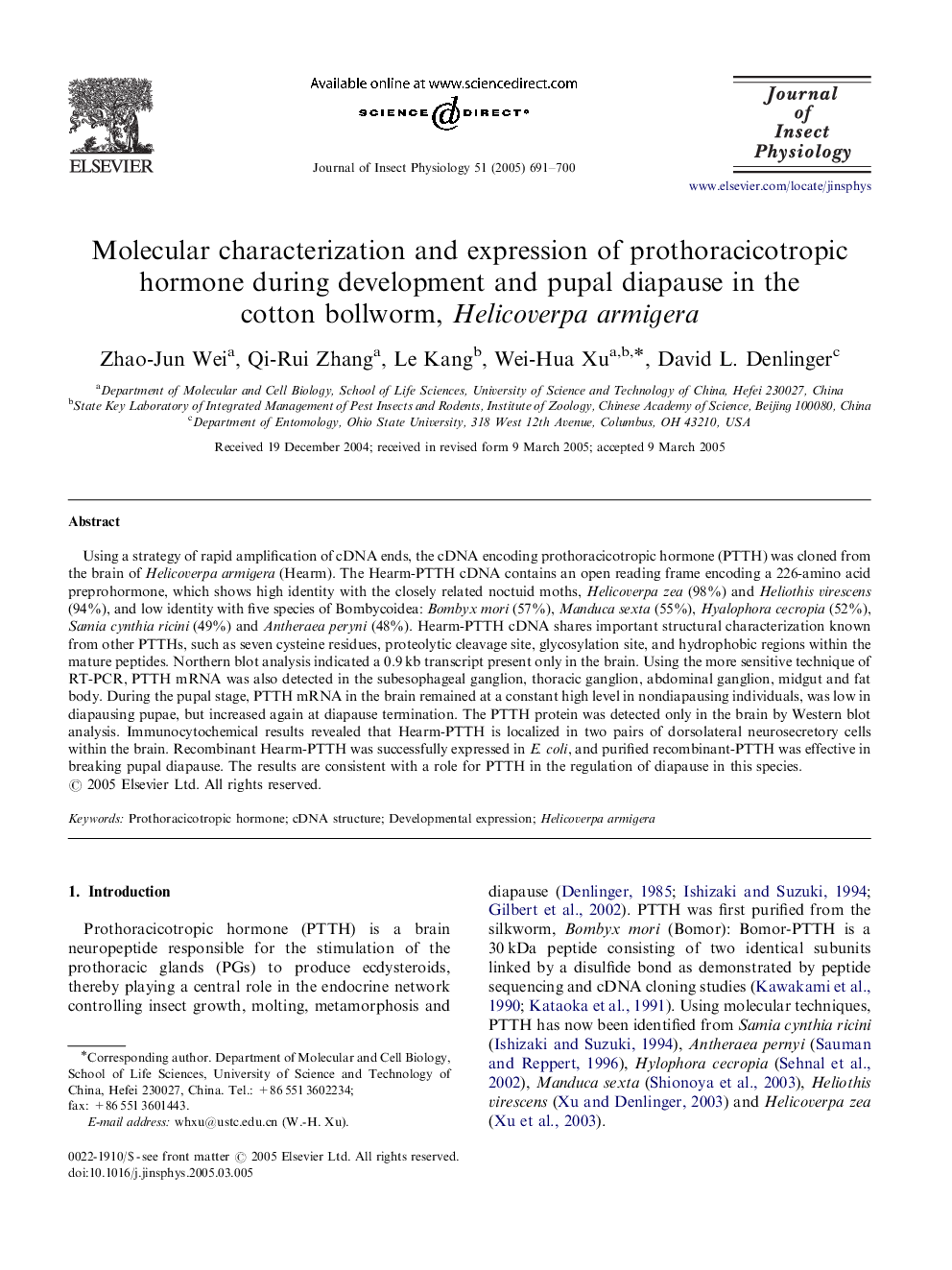| Article ID | Journal | Published Year | Pages | File Type |
|---|---|---|---|---|
| 9147582 | Journal of Insect Physiology | 2005 | 10 Pages |
Abstract
Using a strategy of rapid amplification of cDNA ends, the cDNA encoding prothoracicotropic hormone (PTTH) was cloned from the brain of Helicoverpa armigera (Hearm). The Hearm-PTTH cDNA contains an open reading frame encoding a 226-amino acid preprohormone, which shows high identity with the closely related noctuid moths, Helicoverpa zea (98%) and Heliothis virescens (94%), and low identity with five species of Bombycoidea: Bombyx mori (57%), Manduca sexta (55%), Hyalophora cecropia (52%), Samia cynthia ricini (49%) and Antheraea peryni (48%). Hearm-PTTH cDNA shares important structural characterization known from other PTTHs, such as seven cysteine residues, proteolytic cleavage site, glycosylation site, and hydrophobic regions within the mature peptides. Northern blot analysis indicated a 0.9Â kb transcript present only in the brain. Using the more sensitive technique of RT-PCR, PTTH mRNA was also detected in the subesophageal ganglion, thoracic ganglion, abdominal ganglion, midgut and fat body. During the pupal stage, PTTH mRNA in the brain remained at a constant high level in nondiapausing individuals, was low in diapausing pupae, but increased again at diapause termination. The PTTH protein was detected only in the brain by Western blot analysis. Immunocytochemical results revealed that Hearm-PTTH is localized in two pairs of dorsolateral neurosecretory cells within the brain. Recombinant Hearm-PTTH was successfully expressed in E. coli, and purified recombinant-PTTH was effective in breaking pupal diapause. The results are consistent with a role for PTTH in the regulation of diapause in this species.
Related Topics
Life Sciences
Agricultural and Biological Sciences
Insect Science
Authors
Zhao-Jun Wei, Qi-Rui Zhang, Le Kang, Wei-Hua Xu, David L. Denlinger,
